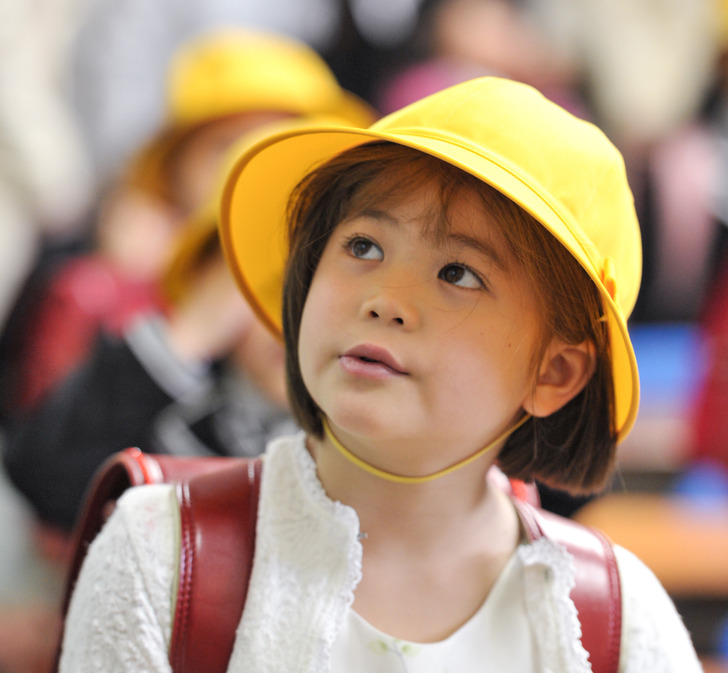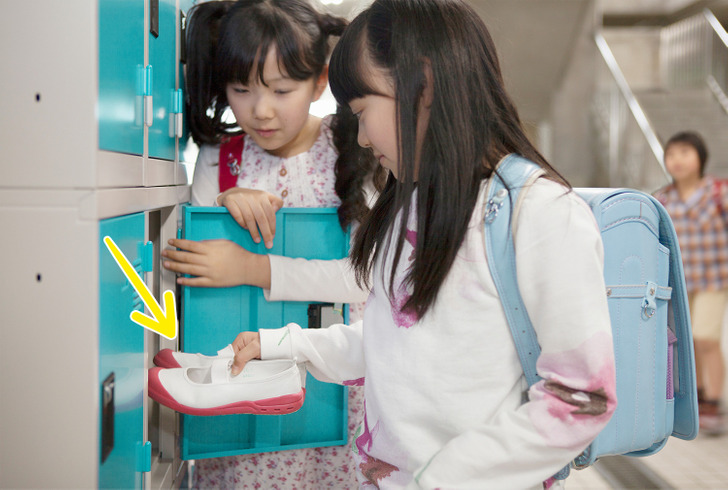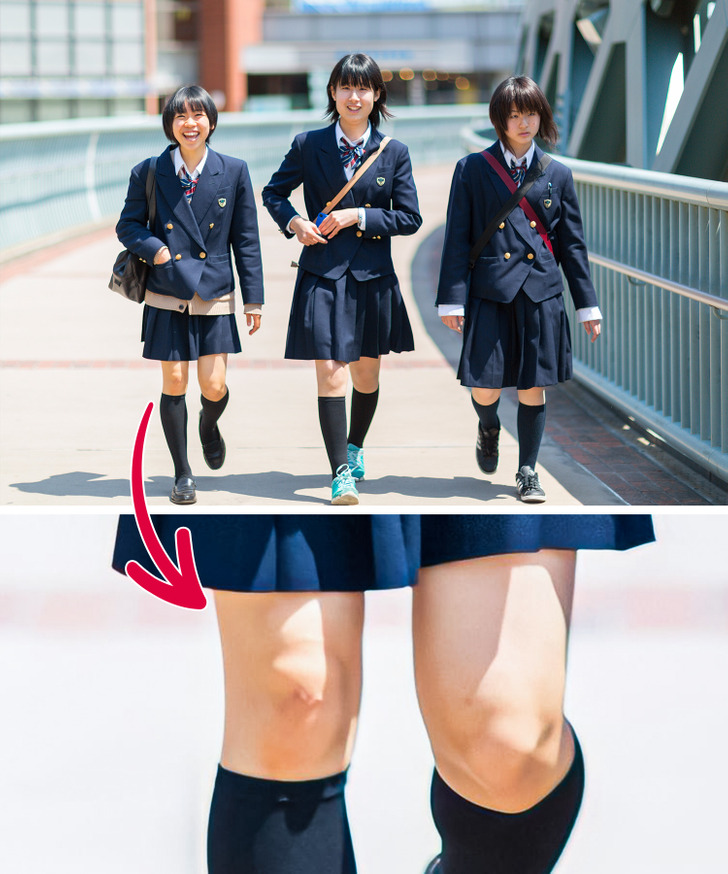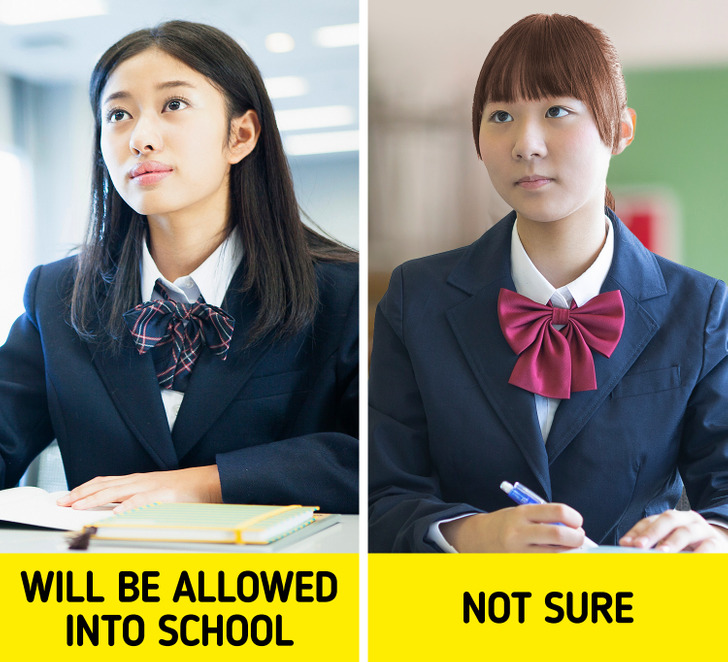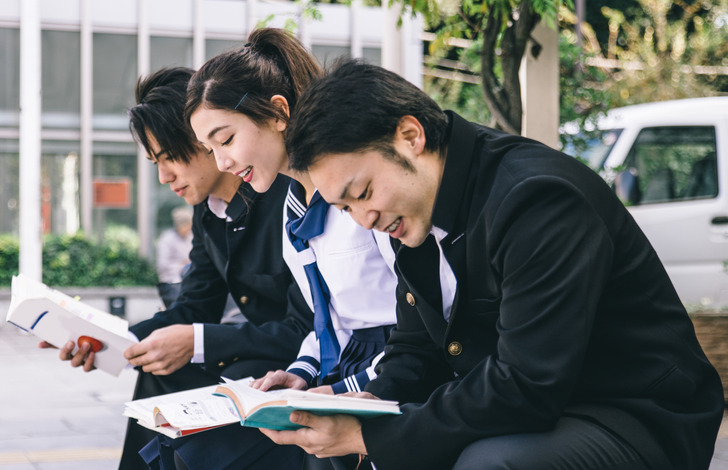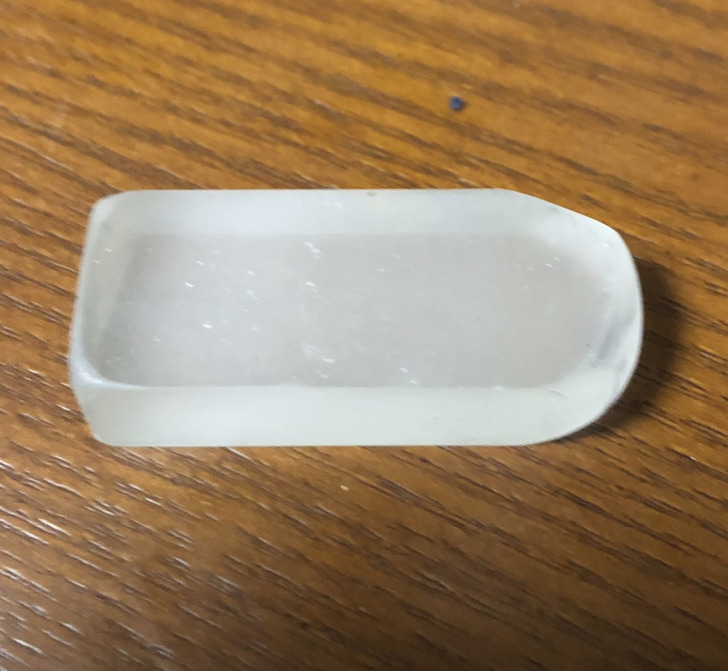15+ School Rules in Japan That Look Really Surprising
Japan is a country of surprises that never stops astonishing foreigners. Even a school year in the Land of the Rising Sun starts, not in August, but in April, and finishes in March. But that’s not the only interesting aspect of the Japanese educational system.
- Kids from 1st to 6th grades are in primary school in Japan. Classes are shuffled every year and teachers change their places so that pupils have a chance to meet new people.
- For 6 years, school kids wear similar school bags that are called “randoseru.” In the most conservative schools, girls wear red randoserus, while boys wear black ones. But this color rule is not the same everywhere.
- Local people say that many first-graders wear yellow hats so that those around them can notice them from afar.
- In some schools, students are responsible for the cleanliness of the school. After classes are over, each class cleans their own classrooms, and special kids on duty wash the toilets and clean the playgrounds.
- When entering the school, kids leave their street shoes in lockers and put on uwabaki — special white slippers that are worn by everyone regardless of their age or gender.
- If parents come to the school, they also need to take off their street shoes and don home footwear, even if the weather outside is warm and dry.
- After the 6th grade, school kids move on to secondary school, which lasts for 3 years. It’s at this stage that most Japanese school kids start to wear a mandatory uniform.
- In 2022, Tokyo loosened some school rules. Previously, some educational establishments instituted a white-only underwear rule. But now students can wear underwear of different colors.
- Some Japanese schoolgirls can’t wear tights, not even in winter, because some schools require that girls wear skirts only with knee socks. Children are told to focus on their education. Girls are not allowed to paint their nails or shave their legs.
- There are some schools that do not allow girls to wear ponytails. They consider that the view of the neck can distract the other students from lessons.
- Many schools forbid girls to apply makeup. Some have a bottle of micellar water in all classrooms. If teachers see a girl with makeup on, they will make her remove it.
- Nearly half of all schools require girls to have straight black hair. If her hair doesn’t meet these standards, then she will have to prove that she didn’t dye or curl her hair. For that, she will have to show a “real hair certificate” signed by her parents, together with her childhood photos.
- High school lasts from 10th to 12th grade. In order to move to grade 10, school kids need to take an admission exam.
- A typical high school student’s schedule includes both required and optional subjects. The required part includes a year-long home economics course, which prepares students for family life. Schoolchildren learn to cook, keep a budget, and discuss the importance of the family.
- Optional subjects sometimes include fishing and agriculture.
- In addition to required classes, almost half of all high school students take preparatory courses to get ready for university enrollment exams.
- Almost every school holds a morning all-school meeting every month — the principal is the main speaker there. Previously, students listened to pep talks standing, but now they do it sitting on the floor in a certain position.
- Some Japanese teachers assess not only subject knowledge but also track how well and how properly students take notes. The hard thing is that students have to write down the information, as their teacher lectures, literally word-for-word. And teachers normally don’t wait for those who can’t write the information down in time.
Bonus: Issues can even occur because of an eraser
“I bought an eraser for my daughter in a stationery shop but she was forbidden to use it in a Japanese school because it is white.”
Which rules from the Japanese educational system do you think we could adopt?
Preview photo credit Yevgen Belich / Shutterstock.com
Share This Article
